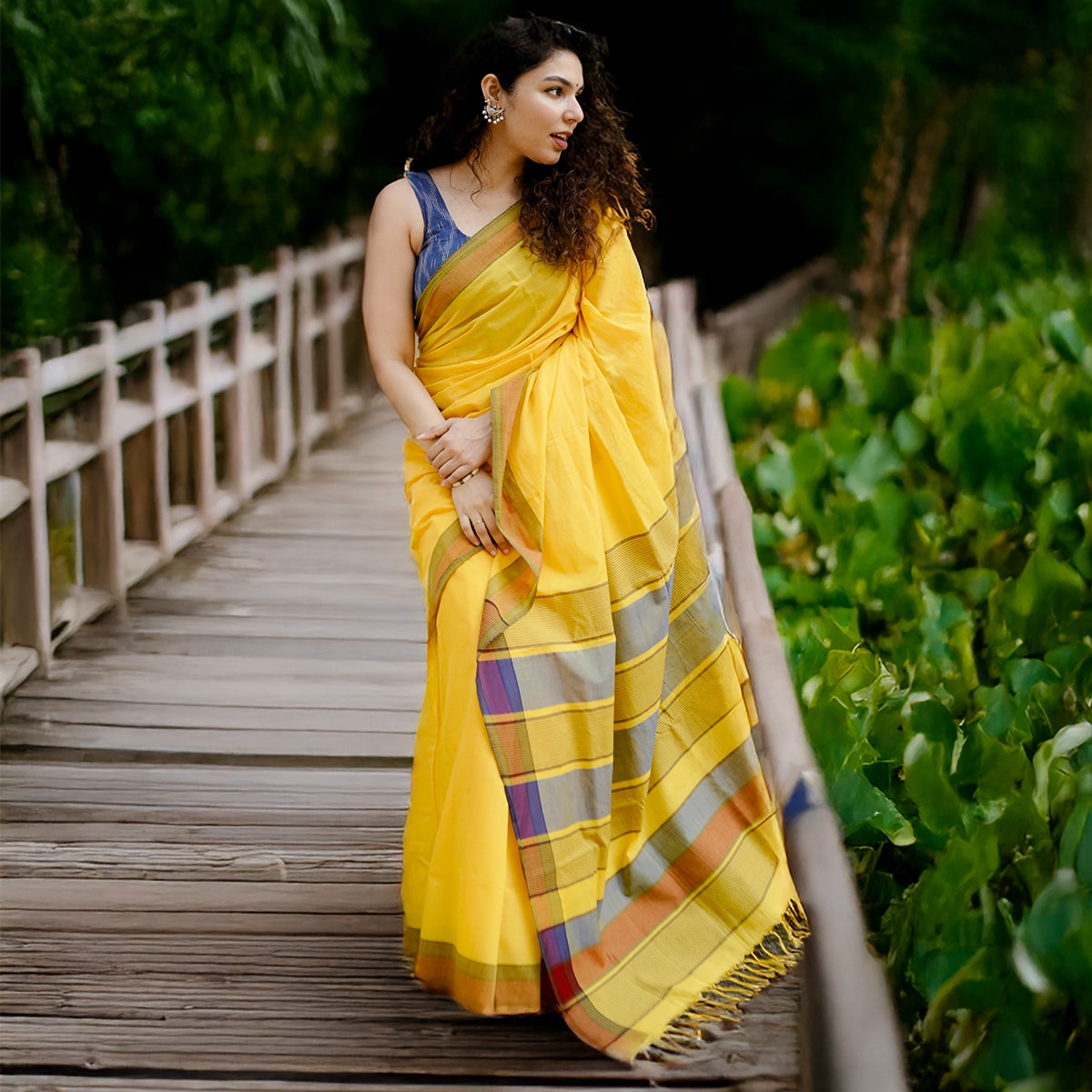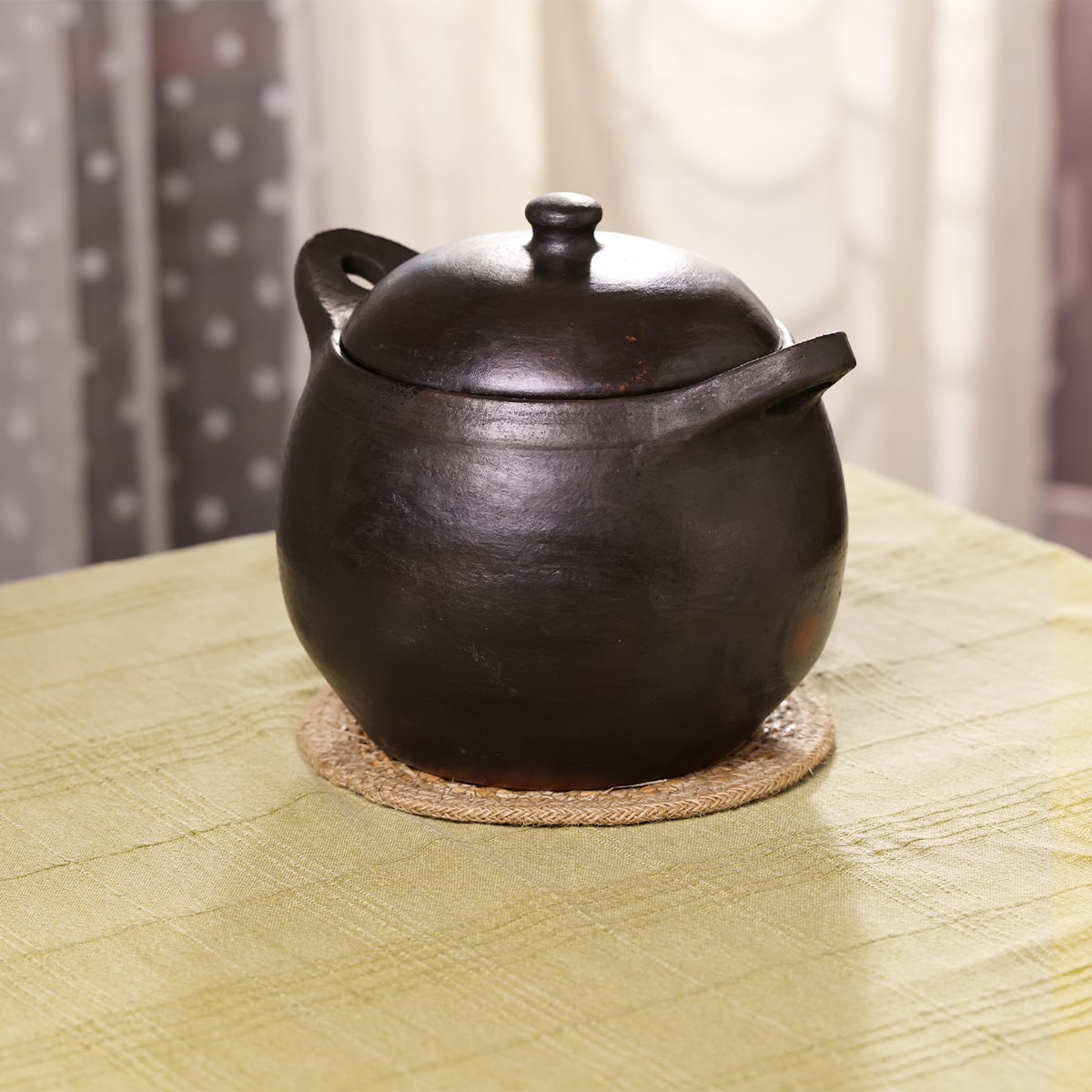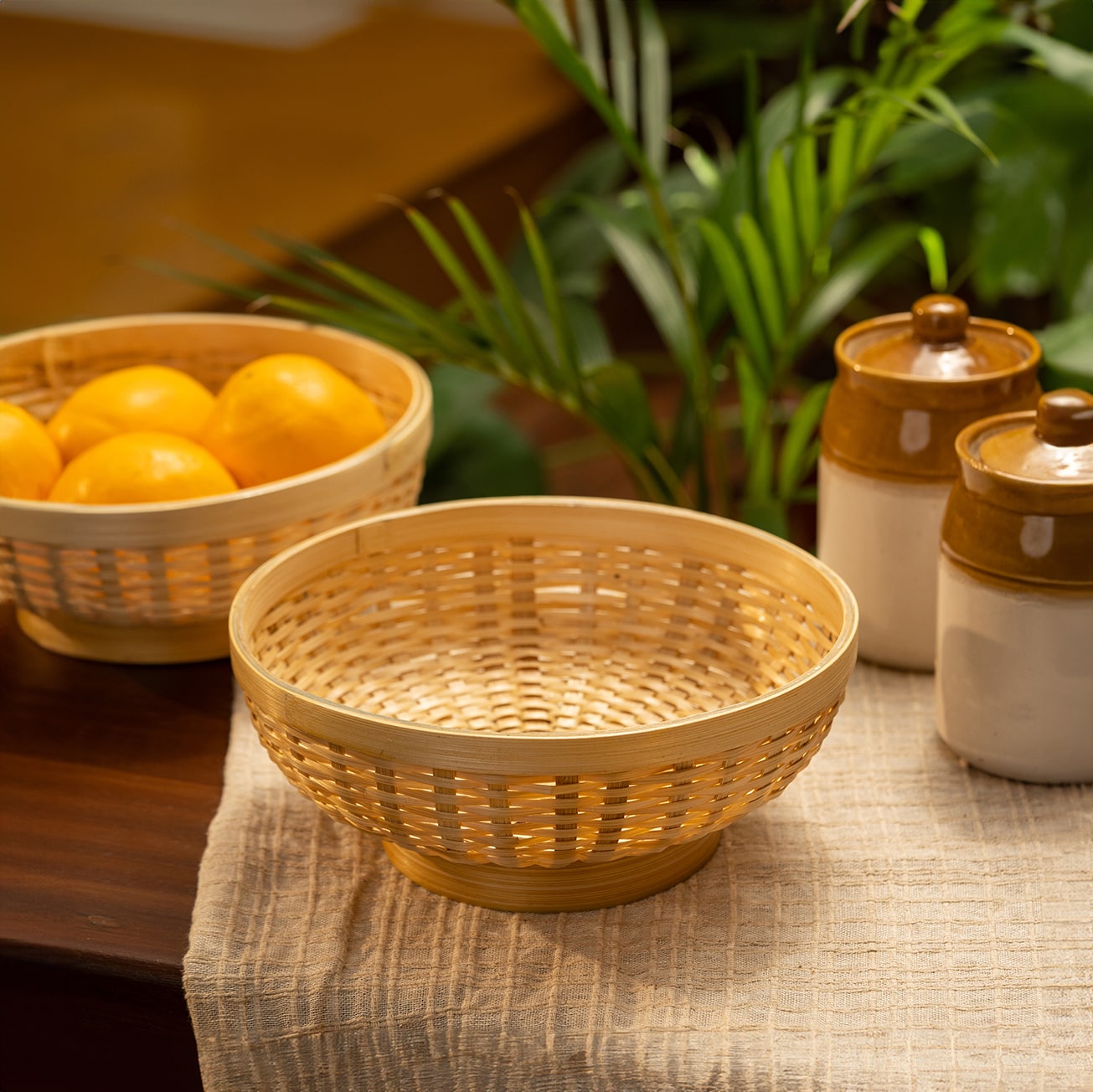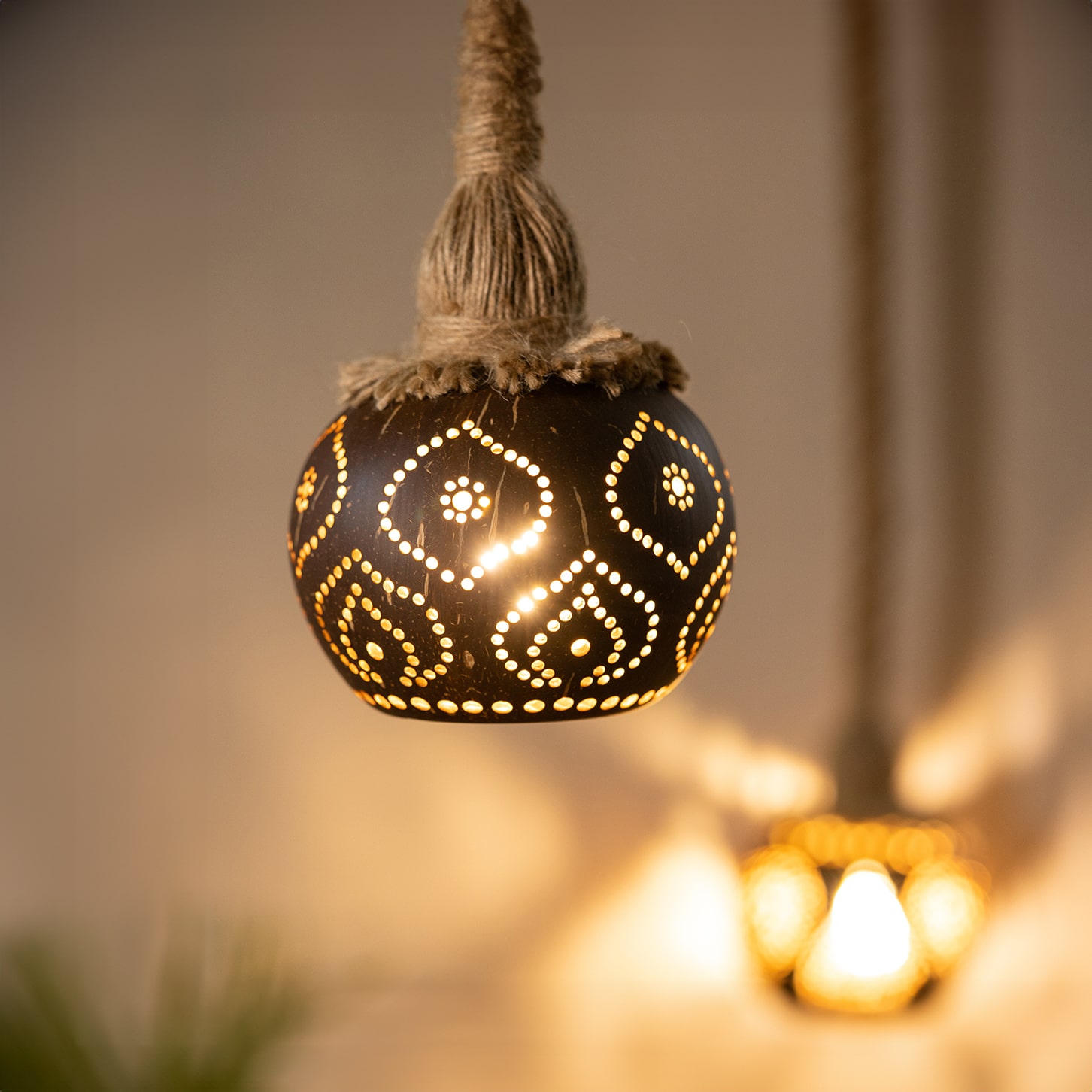Kuthampully Handloom Weavers
It is a Journey of Hearts and Minds…

Once during a journey through North Kerala, we decided to visit Kuthampully, a village famous for handloom textiles, situated about 3 Kms from Thiruvilwamala, a small town on the banks of the beautiful Bharathapuzha (River Nila).
After hours of a memorable journey along ‘bumpy’ roads, under the hot noon sun in the month of May, we reached in front of a cosy, tile-roofed house with a stunning ‘Kolam’ (the art of embellishing floor with the rice flour) design drawn in the front.
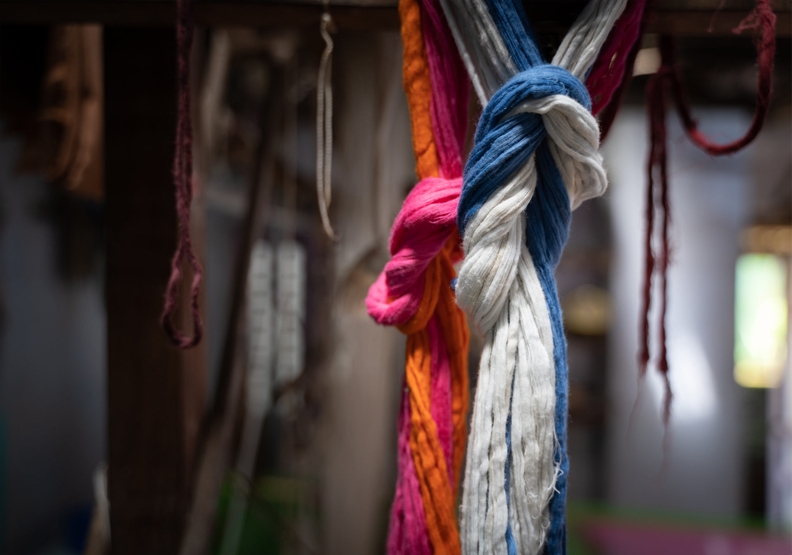
Saravanan, a man with an innocent smile soon came out and welcomed us to the house filled with a fabulous aroma of fresh cotton threads. Over a long conversation, we came to know that Saravanan hails from a family of handloom weavers, and has been into the age-old tradition of weaving since the age of 15.
“As the old-school throw-shuttle pit looms are being replaced by power looms everywhere, Kuthampully’s weavers are struggling to compete in the market”- he said.
But soon we realised from the conversation that weavers like Saravanan aren’t resistant to change; they are willing to experiment with new products, but without destroying the quality of their craftsmanship.
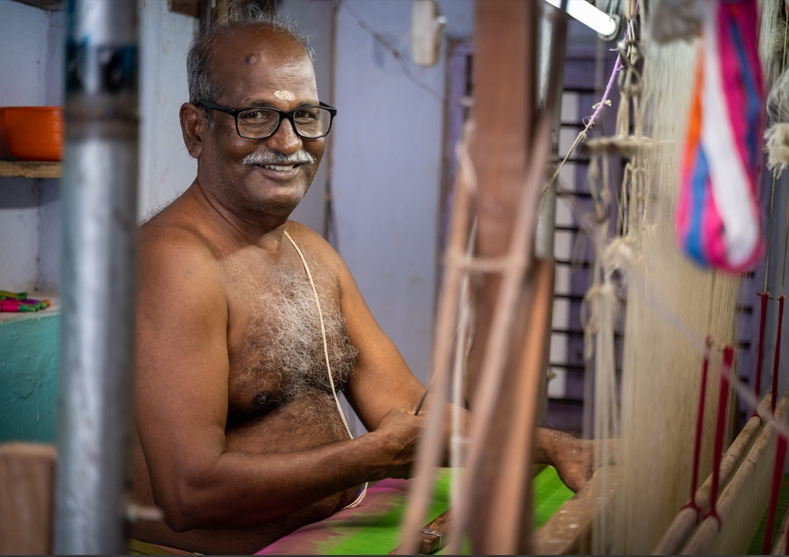
We soon moved to their weaving centre (a shed built as an extension of the house), where the unceasing, rhythmic sound of throw-shuttle pit looms filled the air. Saravanan proudly introduced to us his father Ramaswamy, and elder brother, Prem Kumar (Preman), who were engaged in weaving there.
Preman enthusiastically took over the conversation and started explaining their tradition, history, weaving process and market conditions. Most of the Kuthampully’s weaver families, including theirs, belong to the Deivanga Chettiar Community that traces its roots to Mysore, Karnataka. Some accounts say that their community migrated to Kerala, five hundred years ago, at the invitation of the rulers of Kollengode and Cochin, to weave shawls (randam mundu) and veshti for the royal family. In addition to being paid handsomely, these weavers were allowed to settle on the land with Nila river as the northern border and Gayathri river as the western border.
“When we were children, the entire family used to be involved in the weaving process. There was just one loom in most of the houses. Our father and mother worked alternately from morning to night. On some days, they even worked late into night under the dim glow of kerosene lamps. Our house was too small, and I still remember us lifting the spools and keeping upright to make space for us to sleep.” – a smile crept across Preman’s face when he said this.
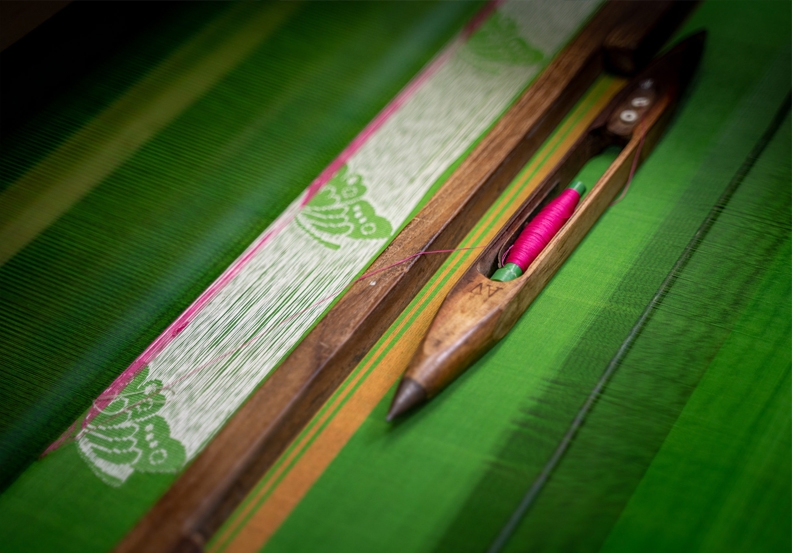
Despite the tough life and working conditions, the Kuthampully weavers brought new life to Kerala’s traditional wear – the mundu (veshti), settu saree (with golden zari border), and the settu mundu (saree in two separate pieces) – with their unique style of weaving and unswerving commitment.
However, with the technically advanced power looms increasingly taking over the handloom business, these traditional weavers started to face stiff competition in the market. They find it hard to compete with the lower prices offered by the power loom products. Though it is obvious that the quality of handloom products is much better than the power loom products, people who practice the ‘use and throw’ culture began looking for cheaper products. The Kuthampully weavers have showed the willingness to change with the current trends and demands, by expanding their product line beyond traditional garments, by adding sarees to their repertoire and more recently venturing into weaving beautifully coloured sarees in addition to the traditional off white ones. The hard work and the dedication that they pour into the hand-weaving process to bring in that extra quality has remained unwavering…
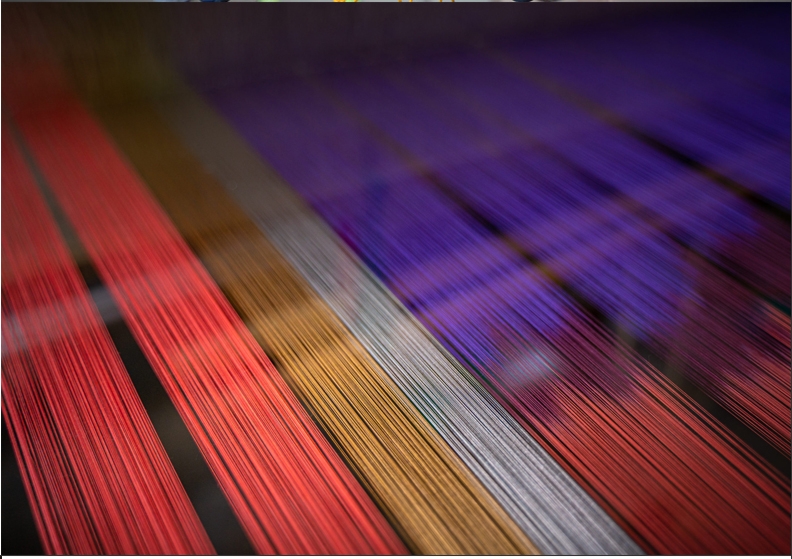
Enjoying the rhythmic sound of the loom and the evergreen Tamil melodies from the 80s that provides the soundtrack while they work, we sat there for about half an hour. While we sat there watching them work, we were astounded to realise that Preman is the artistic talent behind all the artistic designs and brilliant choices of colours for the handloom sarees they wove. Watching the excellent work he does without any formal training, we were impressed beyond words!!
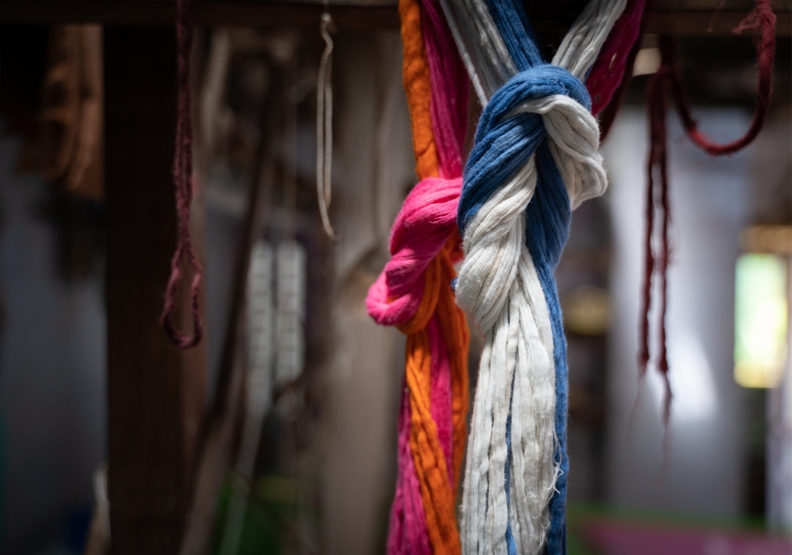
To our question regarding the number of days they take to weave a saree, Preman said it depends on the complexity and the number of designs on it; however, it usually takes anywhere between 2–7 days. He also said that the sarees they weave are procured now by the Kuthampully Handloom Weavers Cooperative Society, as they do not have the necessary marketing skills.

On our way back from the weaving centre, we visited Preman’s house too, where we met their mom Vanithamani – the ‘Ponakkal’ expert! Struggles and poverty haven’t kept the smiles off their faces. When heading back down the entrance steps of that home, we could hear the faint rhythm of the looms weaving together the lives of a group of people from the handloom hamlet – Kuthampully.
Latest creations by our artisans
View AllRecognizing our curiosity, Preman started to describe the weaving process. He showed us the ‘maduppu’ – a wooden cylindrical structure kept on the opposite side of where the weaver sits in a loom. It is on this, the warp threads (‘paavu’) are wound on to. When a weaver completes weaving a full warp, the woven cloth is cut off from the threads attached to ‘maduppu’. Following this, the ‘maduppu’ along with the remains of the cut threads are taken out onto the street for winding a new warp. Preman said they usually do this in misty early mornings
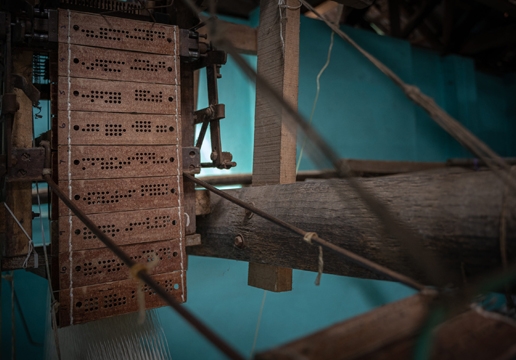

The paavu or starched cotton thread comes from the spinning mills in bundles. The elders of the weaving family would separate and straighten out the threads, each of which would have a length of about 44 meters. The separated thread is then tied onto the piece of thread remaining from the preceding warp on ‘maduppu’. This process, which is termed as ‘ponakkal’, is not familiar to all weavers. Preman told that in their family, only his mother knows this well. Once all the warp threads and the 44 meters threads are tied and wound respectively on to the ‘maduppu’, it is mounted on to the loom.
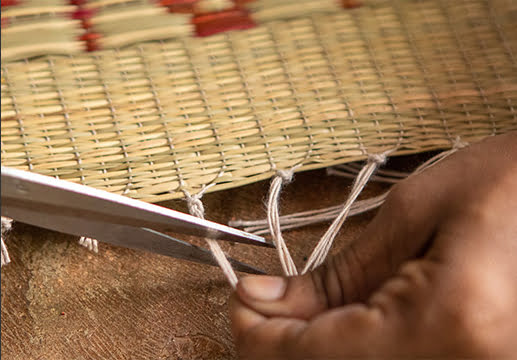
Next is the intricate Jacquard or ‘putta’ design setup, where the weaver takes each warp thread through multiple controlling threads that arise from the jacquard device. This determines the number of designs that will be woven into the width of a saree. The threads (either golden, silver, or normal cotton coloured) to be used for designs are wound on small bobbins, called ‘nadavu’. So, with ‘maduppu’ setup and the warp threads taken through the jacquard setup and tied to the weaving side of the loom, Preman was ready to start showing us the weaving process.
